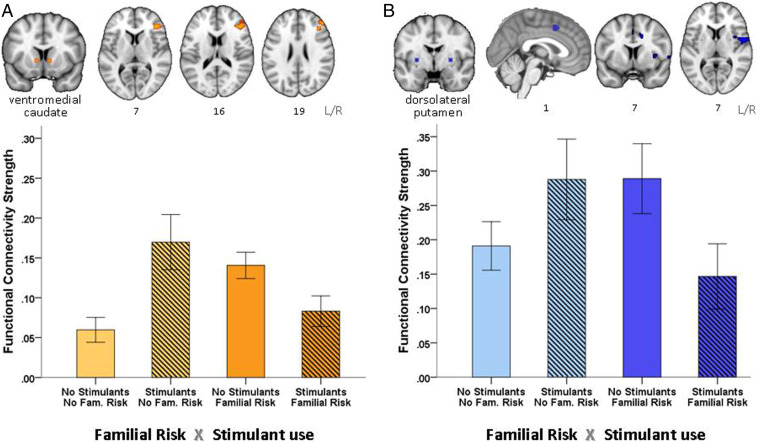Fig. 3.
Participants who had an increased risk for addiction, either due to stimulant drug use or a family history of addiction, showed increased functional connectivity in two networks compared to individuals who have such risks and developed addiction, or who do not have these risks and do not use stimulant drugs: (A) Increased functional connectivity in the goal-directed, inhibitory control network: vmCAU (seed), inferior frontal and middle frontal gyrus, as coloured in orange in the brain maps and plotted for each group in the bar chart, and (B) habitual control network: dorsolateral putamen (seed), central opercular cortex, superior medial frontal, SMA, middle cingulate gyrus, and insula, as coloured in blue in the brain maps and plotted for each group in the bar chart. Error bars denote two SEMs.

